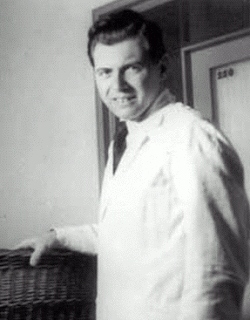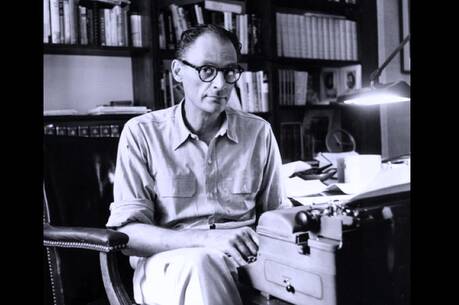What does evil look like? In art, literature and the popular creative imagination, Dr. Frankenstein has that mad glint in his eyes, Professor Moriarty’s eyes bulge when he dreams madly of outsmarting Sherlock Holmes and Dr. Jekyll’s cool surface submerges his inner monster Mr. Hyde. For the mad doctor, the smooth, even handsome, face is a mask hiding the real self. In some cases it’s the thirst for scientific truth that has corrupted the otherwise decent man or the desire to serve is misdirected into the lust to rule.
In the new Argentine film, The German Doctor, a tall, dapper man played by Alex Brendemuhl pulls into the charming wooded Argentine enclave Bariloche in 1960, the wake of World War II. What a nice looking man! A soft-spoken, handsome man—tall, smooth—and a doctor willing to serve the community. The local historical context of such towns precedes the war, tracing their roots to a time when hundreds of German families migrated into German pockets in Patagonia before Nazism really took off. When the war ended the Argentine government opened its doors and allowed fleeing Nazis to use their real names and populate gated towns like Bariloche, an idyllic place at the end of a long forest road and on the banks of a great lake, where the sea planes could fly in over the mountains from the outer world into havens for the guilty.
This German physician is named Josef Mengele, which was also the name of the real life man on which he is based. He arrives in the small town as an Argentinian family—Eva, the mother, Enzo, the father, and their three children—are starting a new life. They entrust their young daughter, Lilith, small for her age, to the doctor’s care. It gradually emerges that this community supported Nazism as it emerged 20 years before. Even now, in the 1960s, the boys have the collective personalities of a Hitler youth movement. They sing their marching songs in class and they have secretly buried their Nazi propaganda literature in the garden. When one of the new boys discovers this they beat him. Meanwhile there are hints that something else is happening off-stage. Why is a young woman with a camera snapping away here and there and at the visiting doctor?
Meanwhile the doctor sympathizes with Lilith, a pre-adolescent embarrassed by her size, and promises that his treatments will make her taller. He also tends to Eva in childbirth. He spends long hours with these children taking notes and filling bulging notebooks with his measurements and detailed sketches of their bodies.
Argentines in the 1960s, including Lilith’s mother, were slow to come to grips with the crimes of the Nazi era; at least they did not realize that the German death camps were also workshops for the re-conception and creation of the “master race.” Recent historical research, independent of the film, tells the story of an itinerant doctor in the early 1960s who moved through Brazil and Argentina posing as a veterinarian who established relationships by caring for the animals, then turned his attention to families, making repeated visits to pregnant women and giving them medicines and drawing blood. Suddenly one in five pregnancies in a small Brazilian town resulted in blond-haired and blue-eyed twins. The master race was taking root.
No one knew that in May 1943, Josef Mengele, an experienced medical researcher at Auschwitz, experimented with twins to try to find the secrets of breeding a superior being. Jewish mothers were torn between hiding their twin children and letting them go with the hope that their participation in the experiments would save them from the ovens.
The doctor insinuates himself into a relationship with the father, a toy maker, who makes individual small dolls. He replaces Enzo’s small doll-repair business with the manufacture of hundreds of “perfect” identical dolls, just like the super race his experiments will bring forth.
A turning point in the film comes when the family discovers the new baby has been tattooed—an indication that the child, like other children in this man’s career, has been part of an experiment—and the woman photographer, whom the director uses to symbolize the presence of an outside world, gets into the doctor’s notebooks and phones Israeli agents who the viewers surmise have tailed the war criminal to Latin America and have apprehended Adolph Eichmann. She thinks she has found the other man they are looking for. Lilith has become the protagonist; as her body matures so does her social conscience. She has an instinctive feel for the tension between good and evil and realizes that what is happening between this man and herself is wrong.
Written and directed by the Argentine novelist Lucía Puenzo, and based on her novel Wakola, “The German Doctor” is partFrankenstein and partFaust. The only violence is the beating inflicted by the psueudo-Nazi teen-aged boys. But this echoes the film’s major theme: elitism, racism and evil work silently, relentlessly, abusing friendship, transforming society into a mass movement—and often doing so with a handsome face.








